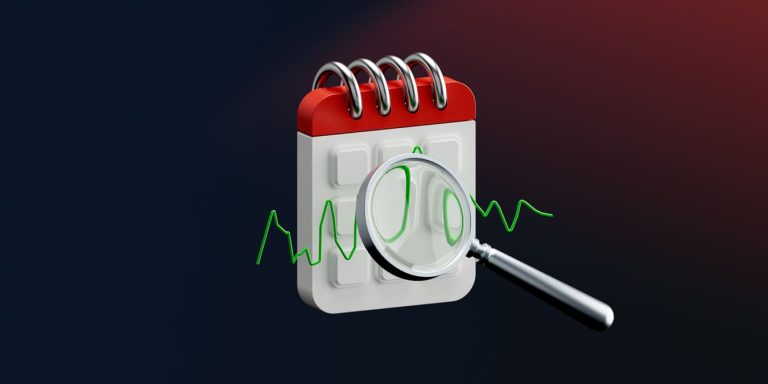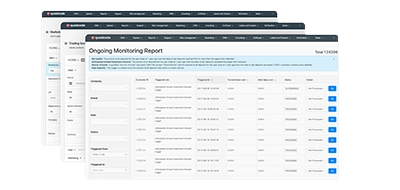Quay lại
Contents
Giải thích về VWAP: Định nghĩa, Cách sử dụng, Ví dụ


Demetris Makrides
Senior Business Development Manager

Iva Kalatozishvili
Business Development Manager
Được coi là một chuẩn mực giao dịch được sử dụng rộng rãi, Giá Trung bình Khối lượng Có trọng số (VWAP) tính toán, dựa trên khối lượng giao dịch hàng ngày, giá trung bình của một tài sản. Không giống như giá trung bình thông thường, VWAP tính đến khối lượng giao dịch ở mọi mức giá, do đó cung cấp bức tranh toàn cảnh hơn về giá trị thị trường thực tế trong suốt phiên giao dịch. Chỉ báo này cho phép các nhà giao dịch đánh giá xu hướng giá chung, định hướng lựa chọn thời điểm bắt đầu và kết thúc giao dịch, và theo dõi thành công của việc thực hiện giao dịch.
VWAP là gì?
VWAP là viết tắt của Volume Weighted Average Price (Giá trung bình có trọng số theo khối lượng). Dựa trên khối lượng giao dịch tại mỗi mức giá, giá này công cụ phân tích kỹ thuật Tính toán giá trung bình của một tài sản, chẳng hạn như cổ phiếu hoặc hàng hóa, trong một khoảng thời gian nhất định, thường là một ngày giao dịch. VWAP chú trọng hơn vào các mức giá có nhiều hoạt động giao dịch hơn so với các đường trung bình động cơ bản, vốn xem xét tất cả các điểm giá như nhau. Phản ánh nơi diễn ra hầu hết các hoạt động giao dịch, hệ số này mang lại bức tranh chân thực hơn về giá trung bình.
VWAP được tính toán bằng cách đầu tiên tính tổng giá tích lũy nhân với khối lượng giao dịch cho mỗi giao dịch chia cho tổng khối lượng tích lũy tính đến thời điểm đó. Công thức là:
(Giá điển hình x Khối lượng) ÷ Tổng số cổ phiếu giao dịch = VWAP
Giá điển hình được thiết lập bằng cách kết hợp giá cao, giá thấp và giá đóng cửa của chứng khoán trong một khoảng thời gian giao dịch nhất định rồi chia cho ba.
Âm lượng in trading refers to the total number of contracts or shares exchanged during a certain trading session. Âm lượng shows the security's trading activity and liquidity degree.
Tổng số cổ phiếu được giao dịch là tổng tích lũy của khối lượng giao dịch trong tất cả các giai đoạn cho đến thời điểm hiện tại trong ngày giao dịch . Nó thể hiện tổng hoạt động giao dịch của chứng khoán.
VWAP cho bạn biết điều gì?
VWAP cung cấp một số thông tin chi tiết quan trọng:
VWAP trước tiên giúp các nhà giao dịch đánh giá chất lượng thực hiện giao dịch của họ. Việc mua dưới VWAP hoặc bán trên VWAP được cho là tốt vì nó cho thấy nhà giao dịch đã có được giao dịch tốt hơn so với người tham gia thị trường thông thường. Đối với các nhà đầu tư tổ chức thực hiện các lệnh lớn và muốn giảm thiểu tác động của thị trường, điều này đặc biệt quan trọng.
Thứ hai, VWAP giúp xác định xu hướng thị trường. Nếu giá hiện tại cao hơn VWAP, điều này có thể cho thấy một xu hướng tích cực - tức là tài sản đang mạnh lên. Ngược lại, giá thấp hơn VWAP có thể cho thấy một xu hướng tiêu cực, do đó ngụ ý khả năng tài sản sẽ giảm.
Đường VWAP cũng có thể đóng vai trò là ngưỡng hỗ trợ hoặc kháng cự động. Các nhà giao dịch quan sát cách giá tương tác với đường VWAP; ví dụ, trong một xu hướng tăng, VWAP có thể hoạt động như một ngưỡng hỗ trợ mà tại đó giá sẽ phục hồi sau những đợt điều chỉnh nhỏ.
Hơn nữa, VWAP cung cấp thông tin về tính thanh khoản của tài sản ở nhiều mức giá khác nhau nhờ kết hợp khối lượng giao dịch. Khối lượng giao dịch cao ở một số mức giá nhất định cho thấy sự quan tâm đáng kể từ những người tham gia thị trường, điều này có thể ảnh hưởng đến biến động giá trong tương lai.
Cách sử dụng VWAP trong giao dịch
Trên thực tế, các nhà giao dịch sử dụng VWAP theo nhiều cách để nâng cao chiến lược giao dịch của họ. Một phương pháp phổ biến là dựa trên VWAP để thực hiện giao dịch. Để đảm bảo giao dịch ở mức giá hợp lý so với mức trung bình hàng ngày, các nhà giao dịch tìm cách mua ở mức giá thấp hơn VWAP và bán ở mức giá cao hơn.
Một ứng dụng khác là xác nhận xu hướng. VWAP có thể hỗ trợ các nhà giao dịch xác minh hướng và sức mạnh của xu hướng bằng cách sử dụng các chỉ báo kỹ thuật khác. Ví dụ, giao dịch thường xuyên trên VWAP có thể hỗ trợ kỳ vọng tích cực, trong khi giao dịch thường xuyên dưới VWAP có thể chỉ ra xu hướng giảm.
Các cơ hội đảo chiều tiềm năng cũng được tìm thấy bằng cách sử dụng VWAP. Các nhà giao dịch tìm kiếm các trường hợp giá cắt qua VWAP, từ đó chỉ ra sự thay đổi trong thái độ của thị trường. Ví dụ, sự chuyển đổi từ xu hướng giảm sang xu hướng tăng có thể được chỉ ra nếu giá tăng từ dưới lên trên VWAP.
You may also like

VWAP so với EMA?
VWAP tính toán giá trung bình của một tài sản trong một khoảng thời gian cụ thể, thường là một ngày giao dịch, bằng cách cân nhắc khối lượng giao dịch ở mỗi mức. Do đó, giá có khối lượng giao dịch cao hơn sẽ ảnh hưởng nhiều hơn đến VWAP. Chủ yếu được sử dụng cho nghiên cứu trong ngày, VWAP sẽ được đặt lại vào đầu ngày giao dịch. VWAP cung cấp cho các nhà giao dịch cái nhìn tổng quan về diễn biến thị trường bằng cách tổng hợp dữ liệu giá và khối lượng, từ đó chỉ ra mức giá trung bình mà hầu hết các giao dịch diễn ra trong ngày.
Ngược lại, vì EMA nhấn mạnh dữ liệu giá hiện tại hơn so với đường trung bình động tiêu chuẩn, nên nó là một dạng đường trung bình động nhạy cảm hơn với thông tin mới. Việc áp dụng hệ số nhân cho giá hiện tại rồi cộng vào giá trị EMA trước đó sẽ tạo ra EMA. Không giống như VWAP, EMA không tính đến khối lượng giao dịch khi tính toán, được áp dụng trên nhiều khoảng thời gian, bao gồm 10 ngày, 50 ngày hoặc 200 ngày. Các nhà giao dịch tạo tín hiệu giao dịch, tìm hướng xu hướng và ước tính các mức hỗ trợ và kháng cự khả thi bằng cách sử dụng EMA.
VWAP về cơ bản là một chuẩn mực thực hiện giao dịch, giúp các nhà giao dịch đánh giá chất lượng giao dịch của họ bằng cách tập trung vào mối liên hệ giữa giá và khối lượng trong một ngày giao dịch. Đối với các nhà giao dịch tổ chức đang thực hiện các lệnh lớn nhằm giảm thiểu ảnh hưởng của thị trường, chỉ báo này rất hữu ích. Ngược lại, đường EMA cung cấp một đường thẳng trơn tru theo dõi xu hướng giá trong một khoảng thời gian nhất định, do đó cho phép các nhà giao dịch xác định động lượng thị trường và đưa ra quyết định dựa trên hướng của xu hướng. Mặc dù các chỉ số này có giá trị lớn, nhưng chúng được sử dụng trong các trường hợp riêng biệt trong các phương pháp giao dịch và có các mục tiêu khác nhau.
VWAP có lợi nhuận không?
VWAP có thể là một công cụ hữu ích khi được bổ sung đúng cách vào chiến lược giao dịch, ngay cả khi về cơ bản nó không phải là một chỉ báo tạo ra lợi nhuận. Lợi nhuận của một nhà giao dịch sẽ phụ thuộc vào mức độ hiệu quả của việc họ kết hợp nó với các phương pháp phân tích và biện pháp kiểm soát rủi ro khác.
Sử dụng VWAP có thể cải thiện việc thực hiện giao dịch bằng cách nhắm đến mục tiêu đạt được mức giá tốt hơn so với mức giá trung bình của người tham gia thị trường. Nó giúp điều chỉnh các giao dịch theo xu hướng thị trường hiện hành, từ đó tăng khả năng thành công.
Tuy nhiên, chỉ dựa vào VWAP có thể là chưa đủ. Để xác minh tín hiệu và cải thiện chiến lược, các nhà giao dịch nên cân nhắc kết hợp VWAP với các chỉ báo kỹ thuật khác như đường trung bình động, RSI hoặc MACD.
Hơn nữa, việc hiểu rõ bối cảnh thị trường là rất quan trọng. VWAP có thể hiệu quả hơn ở những thị trường có khối lượng và thanh khoản ổn định. Trong những thị trường ít giao dịch, VWAP có thể bị bóp méo, dẫn đến những thông tin chi tiết kém tin cậy hơn.
You may also like

Các nhà giao dịch chuyên nghiệp có sử dụng VWAP không?
Các chuyên gia giao dịch, bao gồm các nhà đầu tư tổ chức, quỹ đầu cơ, công ty giao dịch tần suất cao, thực tế phần lớn dựa vào VWAP trong chiến lược của họ. Đối với các nhà giao dịch tổ chức đánh giá chất lượng thực hiện các lệnh lớn, VWAP cung cấp một cơ sở hoặc một chuẩn mực. Việc đạt được mức giá thực hiện tốt hơn VWAP đôi khi được coi là thành công vì nó chứng minh rằng giao dịch đã được hoàn thành ở mức giá tốt hơn mức giá trung bình trong ngày.
Thuật toán VWAP cũng được các nhà giao dịch chuyên nghiệp sử dụng để thực hiện các giao dịch lớn mà không gây ảnh hưởng đáng kể đến biến động giá. Việc nhắm mục tiêu vào VWAP sẽ giúp họ phân tán lệnh trong ngày, do đó hạn chế tác động của thị trường và sự trượt rủi ro.
Hơn nữa, nghĩa vụ ủy thác và tuân thủ quy định thường đòi hỏi các tổ chức phải chứng minh rằng họ đã thực hiện tốt nhất có thể cho khách hàng của mình; VWAP cung cấp chuẩn mực cho điều này.
Ưu điểm và hạn chế của VWAP
Đặc biệt, xét về việc cung cấp cho các nhà giao dịch góc nhìn toàn diện về cả giá và khối lượng trong suốt ngày giao dịch, VWAP mang lại cho họ một số lợi ích đáng kể. Đối với các nhà giao dịch đang cố gắng đưa ra quyết định sáng suốt, VWAP cung cấp cái nhìn thực tế hơn về nơi diễn ra hầu hết các hoạt động giao dịch bằng cách tính trọng số giá dựa trên khối lượng giao dịch. Do đó, VWAP là một công cụ tuyệt vời để đánh giá chất lượng thực hiện giao dịch, bởi vì việc bán trên hoặc mua dưới VWAP thường được coi là thuận lợi. Bằng cách hoạt động như một chuẩn mực cho biết liệu một tài sản đang được giao dịch trên hay dưới mức giá thông thường của nó, VWAP cũng giúp xác định xu hướng thị trường và do đó cho thấy thái độ thị trường tăng giá hoặc giảm giá.
VWAP cũng cung cấp một mức hỗ trợ và kháng cự động, giúp các nhà giao dịch quyết định vị thế vào và thoát lệnh tốt nhất cho giao dịch trong ngày. VWAP đặc biệt hữu ích cho các nhà giao dịch tổ chức xử lý các lệnh lớn vì nó thể hiện dữ liệu giá và khối lượng theo thời gian thực, cho phép họ thực hiện giao dịch theo cách giảm thiểu tác động thị trường. Bằng cách phân phối lệnh trong suốt ngày giao dịch và nhắm mục tiêu VWAP, các nhà giao dịch này có thể đạt được mức giá hiệu quả hơn mà không gây ra gián đoạn giá đáng kể. Hơn nữa, việc tích hợp VWAP vào các chiến lược giao dịch thuật toán đã biến nó thành một công cụ tiêu chuẩn để thực hiện các lệnh nhằm mục đích khớp hoặc cải thiện giá trung bình của thị trường.
Mặc dù có nhiều ưu điểm, VWAP có nhiều hạn chế, chủ yếu liên quan đến thiết kế của nó như một chỉ báo trong ngày. VWAP được thiết lập lại vào đầu mỗi ngày giao dịch, vì vậy nó chỉ phù hợp cho việc nghiên cứu ngắn hạn và có thể không cung cấp cho các nhà giao dịch đang cố gắng nắm bắt biến động giá dài hạn bất kỳ thông tin chi tiết nào. Hơn nữa, VWAP được tính toán bằng dữ liệu tích lũy, do đó nó thường chậm hơn so với biến động giá theo thời gian thực, điều này có thể bất lợi trong các thị trường biến động mạnh hoặc biến động nhanh. Đặc biệt trong thời điểm giá biến động nhanh, các nhà giao dịch có thể nhận thấy rằng việc chỉ dựa vào VWAP mà không xem xét các chỉ báo khác sẽ dẫn đến tín hiệu bị trễ.
VWAP cũng có độ tin cậy hạn chế trong các thị trường có khối lượng giao dịch nhỏ hoặc biến động đáng kể. Trong những trường hợp như vậy, VWAP có thể bị lệch và đưa ra giá trung bình của chứng khoán không chính xác. Các giao dịch lớn cũng có thể ảnh hưởng không cân xứng đến VWAP, đặc biệt là trong các thị trường ít thanh khoản, do đó làm sai lệch chỉ báo và khiến nó kém chính xác hơn trong việc đo lường hoạt động thị trường. Cuối cùng, việc VWAP không thể dự đoán chính xác các biến động giá trong tương lai càng nhấn mạnh tầm quan trọng của việc kết hợp nó với các chỉ báo kỹ thuật hoặc công cụ nghiên cứu thị trường khác để tránh việc quá phụ thuộc và cung cấp một phương pháp giao dịch toàn diện hơn.
Phần kết luận
Kết hợp dữ liệu giá và khối lượng, VWAP là một công cụ hữu ích, cung cấp cho nhà giao dịch nhận thức sâu sắc hơn về giá giao dịch trung bình của một chứng khoán trong suốt cả ngày. Bằng cách xem xét khối lượng ở mọi cấp độ, VWAP cung cấp những hiểu biết vượt ra ngoài mức giá trung bình đơn thuần, do đó giúp nhà giao dịch cải thiện kế hoạch thực hiện, nhận biết xu hướng thị trường và đưa ra những đánh giá chính xác hơn. Mặc dù VWAP thường được các nhà giao dịch giàu kinh nghiệm sử dụng và khi được sử dụng đúng cách, có thể giúp giao dịch thành công, nhưng việc sử dụng VWAP như một phần của khuôn khổ phân tích tổng thể là rất quan trọng, tích hợp nó với các chỉ báo khác và các chỉ báo phù hợp. quản lý rủi ro các thủ tục để tối đa hóa lợi thế của nó.
FAQ
Thường được coi là một chỉ báo giá trị, VWAP phản ánh giá giao dịch trung bình của một tài sản trong ngày bằng cách kết hợp giá và khối lượng. Các nhà giao dịch trong ngày và nhà đầu tư tổ chức, những người phải đánh giá chất lượng thực hiện giao dịch của mình, sẽ đặc biệt được hưởng lợi từ chỉ báo này. Tuy nhiên, giống như các chỉ báo khác, VWAP có những hạn chế nhất định, do đó nên sử dụng kết hợp với các công cụ phân tích khác để đưa ra quyết định giao dịch sáng suốt.
Các nhà giao dịch thường muốn mua dưới VWAP và bán trên nó. Việc mua dưới VWAP cho thấy bạn thực sự đang mua tài sản ở mức giá thấp hơn giá thị trường trung bình hàng ngày - một lợi ích. Tuy nhiên, trước khi quyết định, điều quan trọng là phải xem xét các yếu tố khác như xu hướng chung của thị trường, vì việc mua dưới VWAP trong một thị trường đang suy giảm khó có thể mang lại kết quả khả quan.
Bằng cách giúp các nhà giao dịch tìm ra các mức hỗ trợ và kháng cự trong ngày dựa trên giá trung bình có trọng số khối lượng, VWAP có thể hữu ích cho việc đầu cơ lướt sóng. Nó cung cấp một tiêu chuẩn để các nhà đầu cơ lướt sóng có thể đo lường biến động giá ngắn hạn. Tuy nhiên, vì đầu cơ lướt sóng đòi hỏi khung thời gian cực ngắn, nên chỉ dựa vào VWAP là không đủ; thông thường, nó sẽ hiệu quả hơn khi kết hợp với các chỉ báo thời gian thực và phương pháp phân tích khác dành riêng cho chiến lược đầu cơ lướt sóng.
Đã cập nhật:
19 tháng 12, 2024




